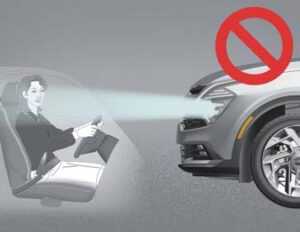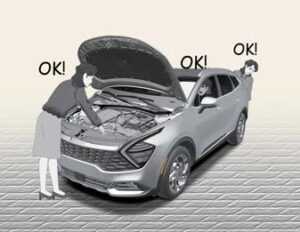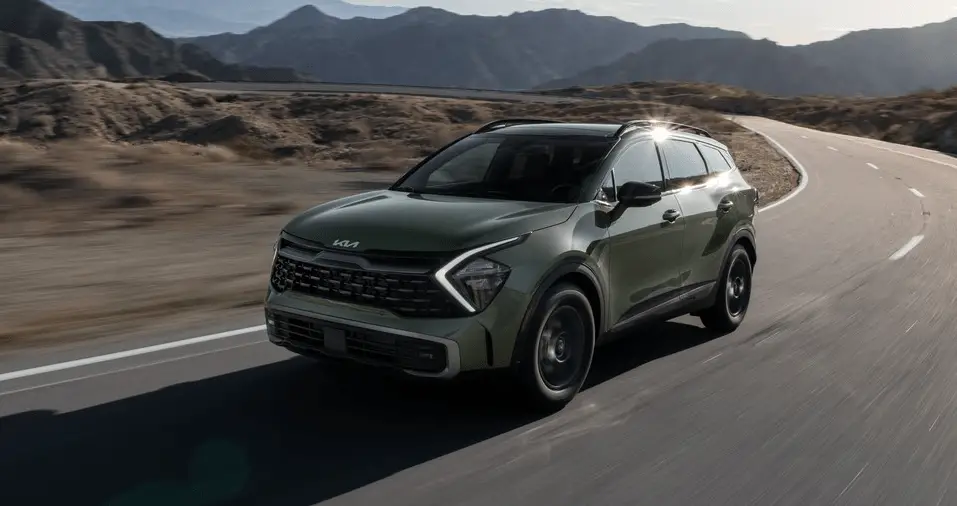2023 Kia Sportage Economical Operations And Special Driving Conditions
As automotive engineering and customer expectations change all the time, the 2023 Kia Sportage stands out as a model of efficiency and adaptability that pushes the limits of what is possible in terms of fuel economy and driving conditions. This car shows Kia’s unwavering dedication to providing an unmatched driving experience that balances speed with environmental awareness. Its design places a strong emphasis on sustainability and cost-effective mobility. From its carefully thought-out powertrain choices to its sleek, aerodynamic design,
the 2023 Sportage is made to get the best gas mileage, lower emissions, and lower operating costs without sacrificing power or versatility. Its versatility is shown by how well it handles different driving situations, such as crowded city streets, rough terrain, and long highway trips. Each drive is an example of both smart money management and caring for the environment.
The 2023 Kia Sportage is the first car to combine economy and flexibility in a way that makes it truly exceptional. Drivers will not only enjoy the thrill of the ride, but also know that their choices are good for the environment and their wallets.
2023 KIA SPORTAGE Specs, Price, Features, Mileage and Torque
Economical operation
Your vehicle’s fuel economy depends mainly on your style of driving, where you drive, and when you drive.
Each of these factors affects how many kilometres (miles) you can get from a liter (gallon) of fuel. To operate your vehicle as economically as possible, use the following driving suggestions to help save money on both fuel and repairs:
- Drive smoothly. Accelerate at a moderate rate. Don’t make “jackrabbit” starts or full-throttle shifts and maintain a steady cruising speed. Don’t race between stoplights. Try to adjust your speed to the traffic so you don’t have to change speeds unnecessarily. Avoid heavy traffic whenever possible.
Always maintain a safe distance from other vehicles so you can avoid unnecessary braking. This also reduces brake wear. - Drive at a moderate speed. The faster you drive, the more fuel your vehicle uses. Driving at a moderate speed, especially on the highway, is one of the most effective ways to reduce fuel consumption.
- Take care of your tires. Keep them inflated to the recommended pressure. Incorrect inflation, either too much or too little, results in unnecessary tire wear. Check the tire pressures at least once a month.
- Be sure that the wheels are aligned correctly. Improper alignment can result from hitting curbs or driving too fast over irregular surfaces. Poor alignment causes faster tire wear and may also result in other problems as well as greater fuel consumption.
- Keep your vehicle in good condition. Travel lightly. Don’t carry unnecessary
weight in your vehicle. Weight reduces fuel economy. - Don’t let the engine idle longer than necessary. If you are waiting (and not in traffic), turn off your engine and restart only when you’re ready to go.
- Don’t “lug” or “over-rev” the engine. Lugging is driving too slowly in too high a gear resulting in the engine bucking. If this happens, shift to a lower gear. Over-revving is racing the engine beyond its safe limit. This can be avoided by shifting at the recommended speeds.
- Open windows at high speeds can
reduce fuel economy. - Fuel economy is less in crosswinds and headwinds. To help offset some of this loss, slow down when driving in these conditions.
Keeping a vehicle in good operating condition is important both for economy and safety.
Therefore, have the function checked by an authorized Kia dealer.
WARNING
Engine off during motion
Never turn the engine off to coast down hills or anytime the vehicle is in motion. The power steering and power brakes will not function properly without the engine running. In addition, turning off the ignition while driving could engage the steering wheel lock resulting in loss of vehicle steering. Keep the engine on and downshift to an appropriate gear for engine braking effect.
Declaration of conformity (if equipped)
The radio frequency components (Front Radar) complies:
For United States and United States territories
For Canada
The radio frequency components (Rear Corner Radar) complies:
For United States and United States territories

For Canada

Radio frequency radiation expo-sure information:
This equipment complies with FCC radiation exposure limits set forth for an uncontrolled environment. This equipment should be installed and operated with minimum distance of 8 in (20 cm) between the radiator (antenna) and your body. This transmitter must not be co-located or operating in conjunction with any other antenna or transmitter.
Special driving conditions
If driving conditions deteriorate due to poor weather or road conditions, you should pay even more attention than usual to your driving.
Hazardous driving conditions When hazardous driving conditions are encountered such as water, snow, ice, mud, sand, or similar hazards, follow these suggestions:
- Drive cautiously and allow extra distance for braking.
- Avoid sudden braking or steering.
- Do not pump the brake pedal on a vehicle equipped with ABS.
- If stalled in snow, mud, or sand, use the second gear. Accelerate slowly to avoid spinning the drive wheels.
- Use sand, rock salt, or other nonslip material under the drive wheels to provide traction when stalled in ice, snow, or mud.
Reducing the risk of a rollover
This multi-purpose passenger vehicle is defined as a Sports Utility Vehicle (SUV). Utility vehicles have a significantly higher rollover rate than other types of vehicles. SUVs have higher ground clearance and a narrower track to make them capable of performing in a wide variety of off-road applications.
Specific design characteristics give them a higher center of gravity than ordinary vehicles. An advantage of the higher ground clearance is a better view of the road, which allows you to anticipate problems. They are not designed for cornering at the same speeds as conventional passenger vehicles, any more than lows lung sports vehicles are designed to perform satisfactorily in off-road conditions. Due to this risk, driver and passengers are strongly recommended to buckle their seat belts.
In a rollover crash, an unbelted person is significantly more likely to die than a person wearing a seat belt. There are steps that a driver can make to reduce the risk of a rollover.
If at all possible, avoid sharp turns or abrupt maneuvers, do not load your roof rack with heavy cargo, and never modify your vehicle in any way.
WARNING
Rollover
As with other Sports Utility vehicles (SUV), failure to operate this vehicle correctly may result in loss of control, an accident or vehicle rollover.
- Utility vehicles have a significantly higher rollover rate than other types of vehicles.
- Specific design characteristics (higher ground clearance, narrower track, etc.) give this vehicle a higher center of gravity than ordinary vehicles.
- An SUV is not designed for cornering at the same speeds as conventional vehicles.
- Avoid sharp turns or abrupt manoeuvres.
- In a rollover crash, an unbelted person is significantly more likely to die than a person wearing a seat belt. Make sure everyone in the vehicle is properly buckled up.
WARNING
Your vehicle is equipped with tires designed to provide safe ride and handling capability. Do not use tires and wheels that are different in size and type from the originally installed ones. It can affect the safety and performance of your vehicle, which could lead to steering failure or rollover and serious injury. When replacing the tires, be sure to equip all four tires with the tire and wheel of the same size, type, tread, brand, and load-carrying capacity.
Rocking the vehicle
If it is necessary to rock the vehicle to free it from snow, sand, or mud, first turn the steering wheel right and left to clear the area around your front wheels. Then, shift back and forth between R (Reverse) and any forward gear. Do not race the engine, and spin the wheels as little as possible. If you are still stuck after a few tries, have the vehicle pulled out by a tow vehicle to avoid engine overheating and possible damage to the transmission.
WARNING
Sudden vehicle movement
Do not attempt to rock the vehicle if people or objects are nearby. The vehicle may suddenly move forward or backward as it becomes unstuck.
CAUTION
Vehicle rocking
Prolonged rocking may cause vehicle overheating, transmission damage or failure, and tire damage.
CAUTION
Spinning tires
Do not spin the wheels, especially at speeds more than 35 mph (56 km/h). Spinning the wheels at high speeds when the vehicle is stationary could overheat and damage tires and the rotating wheels may fly away and injure bystanders.
NOTICE
The Electronic Stability Control (ESC) should be turned OFF prior to rocking the vehicle.
Smooth cornering

Avoid braking or gear changing in corners, especially when roads are wet. Ideally, corners should always be taken under gentle acceleration. If you follow these suggestions, tire wear will be held to a minimum.
Driving at night

Because night driving presents more hazards than driving in the daylight, here are some important tips to remember:
- Slow down and keep more distance between you and other vehicles, as it may be more difficult to see at night, especially in areas where there may not be any street lights.
- Adjust your mirrors to reduce the glare from other driver’s headlamps.
- Keep your headlamps clean and properly aimed. (On vehicles not equipped with the automatic headlamp aiming feature.) Dirty or improperly aimed headlamps will make it much more difficult to see at night.
- Avoid staring directly at the headlamps of oncoming vehicles. You could be temporarily blinded, and it will take several seconds for your eyes to readjust to the darkness.
Driving in the rain

Rain and wet roads can make driving dangerous, especially if you’re not prepared for the slick pavement.
Here are a few things to consider when driving in the rain:
- A heavy rainfall will make it harder to see and will increase the distance needed to stop your vehicle, so slow down.
- Keep your windshield wiping equipment in good shape. Replace your windshield wiper blades when they show signs of streaking or missing areas on the windshield.
- If your tires are not in good condition, making a quick stop on wet pavement can cause a skid and possibly lead to an accident. Be sure your tires are in good shape.
- Turn on your headlamps to make it easier for others to see you.
- Driving too fast through large puddles can affect your brakes. If you must go through puddles, try to drive through them slowly.
- If you believe you may have gotten your brakes wet, apply them lightly while driving until normal braking operation returns.
Hydroplaning
If the road is wet enough and you are going fast enough, your vehicle may have little or no contact with the road surface and actually ride on the water. The best advice is SLOW DOWN when the road is wet.
Driving in flooded areas
Avoid driving through flooded areas unless you are sure the water is no higher than the bottom of the wheel hub. Drive through any water slowly. Allow adequate stopping distance because brake performance may be affected. After driving through water, dry the brakes by gently applying them several times while the vehicle is moving slowly.
Highway driving

Tires
Adjust the tire inflation pressures to specification. Low tire inflation pressures will result in overheating and possible failure of the tires. Avoid using worn or damaged tires which may result in reduced traction or tire failure. Never exceed the maximum tire inflation pressure shown on the tires.
WARNING
Under/overinflated tires
Always check the tires for proper inflation before driving. Underinflated or overinflated tires can cause poor handling, loss of vehicle control, and sudden tire failure, leading to accidents, injuries, and even death.
WARNING
Tire tread
Always check the tire tread before driving your vehicle. Worn-out tires can result in loss of vehicle control. Worn-out tires should be replaced as soon as possible.
Fuel, engine coolant, and engine oil
High-speed travel consumes more fuel than urban motoring. Do not forget to check both the engine coolant and engine oil.
Drive belt
A loose or damaged drive belt may result in overheating of the engine.
FAQs
What is the fuel efficiency of the 2023 Kia Sportage?
The exact fuel efficiency can vary depending on the engine type and driving conditions, but the 2023 Kia Sportage typically offers competitive fuel economy in its class. You can refer to the EPA ratings or the vehicle’s user manual for specific details.
Are there any fuel-saving features in the 2023 Sportage?
Yes, the 2023 Sportage may come equipped with features like start-stop technology, Eco mode, and aerodynamic design elements to improve fuel efficiency.
What are some tips for maximizing fuel efficiency with the 2023 Sportage?
To maximize fuel efficiency, you can practice efficient driving habits such as maintaining a steady speed, proper tire inflation, and regular vehicle maintenance. Utilizing features like Eco mode and reducing unnecessary idling can also help.
What is a Declaration of Conformity for a vehicle like the 2023 Sportage?
A Declaration of Conformity is a document provided by the manufacturer stating that the vehicle complies with relevant safety and emissions regulations. It confirms that the vehicle meets the required standards and is safe for use on the road.
How does the 2023 Sportage handle winter driving conditions?
The Kia Sportage 2023 may offer features like all-wheel drive (AWD) or traction control systems to improve traction and stability on slippery roads. Winter tires are also recommended for better performance in snow and ice.
Can I take the 2023 Sportage off-road?
While the 2023 Sportage is primarily designed for on-road use, it may offer some off-road capabilities, especially if equipped with AWD. However, it’s essential to be cautious when driving off-road and to follow the manufacturer’s recommendations.
What should I do in extreme weather conditions with the 2023 Sportage?
In extreme weather conditions like heavy rain, snow, or intense heat, it’s essential to adjust your driving style, maintain proper vehicle maintenance, and equip your vehicle with suitable tires and accessories for the specific conditions.
What advanced driver-assistance features are available to help improve economical driving?
The 2023 Sportage may come equipped with advanced driver-assistance features like adaptive cruise control, lane-keeping assist, and even semi-autonomous driving capabilities, which can help optimize fuel efficiency during highway driving.
Useful Link
View Full User Guide: Kia Sportage 2023 User Guide
Download Manuals: https://owners.kia.com/content/owners/en/manuals.html
2023 KIA SPORTAGE Specs, Price, Features, Mileage and Torque


